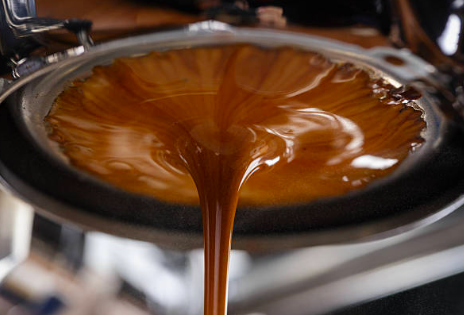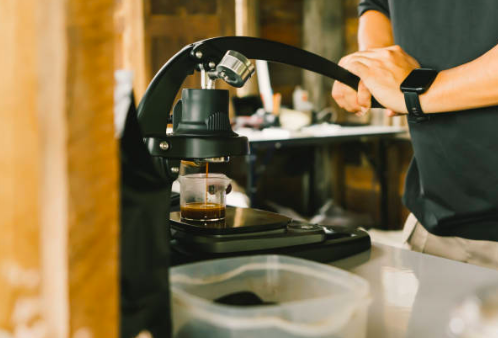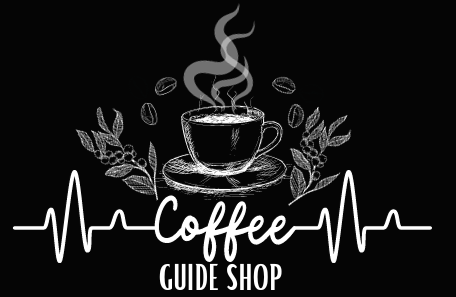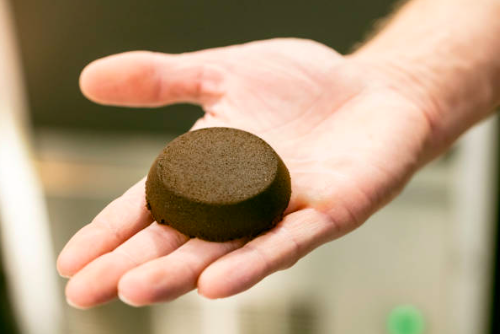Table of contents
Espresso extraction is a crucial aspect of making a delicious and well-balanced cup of coffee. The perfect extraction time can greatly affect the taste, body, and acidity of the espresso. In this article, we will explore why extraction coffee time is important and whether it is consistent for all shots, under and over extraction. We will also discuss the 10 second rule for espresso and tips for achieving the perfect extraction. Keep reading to elevate your espresso game.
Why is the extraction time important?
The extraction time in the process of making espresso is a critical factor that significantly influences the flavor, aroma, and overall quality of the resulting coffee. The duration of the process can either enhance or detract from the sensory experience derived from the final product. Therefore, mastering the extraction time is indispensable in the pursuit of consistently exceptional espresso.
Furthermore, the extraction time plays a pivotal role in controlling the balance of the flavors in your espresso. A properly extracted shot typically displays a harmonious amalgamation of sweetness, acidity, and bitterness, creating a well-rounded and satisfying sensory experience.
In addition, the extraction time can be seen as a reflection of the barista’s skill and precision in crafting the perfect shot of espresso.
Under extraction
Under extraction, or the failure to extract sufficient flavor from the coffee grounds during the espresso extraction process, can result in a number of undesirable characteristics in the resulting shot. These may include a sour or acidic taste, a thin and watery body, and a lack of complexity in flavor. Additionally, under extracted espresso often lacks the characteristic «crema,» the golden-brown layer that crowns a well-prepared shot and contributes to its visual appeal. The absence of crema may indicate under extraction, as the emulsification of oils and colloids that form the crema is a key indicator of a well-extracted espresso.
Furthermore, under extracted espresso may have a faster extraction time, often falling short of the ideal 25-30 seconds. This contributes to the lack of depth and complexity in the resulting shot, as the shorter contact time between the water and the coffee grounds may not allow for the full extraction of the desirable flavors and aromatic compounds. As a result, under extraction is a key concern for baristas and coffee enthusiasts, highlighting the need for a keen understanding of how to achieve the perfect extraction time for espresso.
To address under extraction, baristas may need to make adjustments to their extraction parameters, such as using a finer grind size, increasing the dose of coffee, or ensuring a more uniform and consistent tamping pressure. By attending to these variables, baristas can work towards achieving the optimal extraction time and, in turn, produce a well-balanced and flavorful shot of espresso.
Over extraction
Conversely, over extraction, characterized by the extraction of excessive and undesirable compounds from the coffee grounds, can lead to an entirely different set of flavor defects in the resulting espresso. Over extracted espresso often exhibits a bitter, astringent taste, with pronounced woody or dry characteristics that overshadow the nuanced flavors of the coffee. The prolonged contact time between the water and the overly fine coffee grounds can lead to the dissolution of compounds that impart negative qualities to the espresso, resulting in a less enjoyable and unbalanced sensory experience.
One of the key indicators of over extraction is a particularly slow extraction time, exceeding the recommended 25-30 seconds. This extended duration allows for the excessive extraction of compounds, including tannins and other bittering agents, which can overwhelm the more desirable flavor notes present in the coffee. As a result, achieving the correct extraction time is crucial in preventing the negative outcomes associated with over extraction and is essential for consistently producing high-quality espresso.
How to control the espresso extraction time?
Controlling the extraction time in the process of making espresso is a multi-faceted task that involves a keen understanding of various factors and parameters that influence the extraction process. By carefully manipulating these variables, baristas and coffee enthusiasts can work towards achieving the elusive but essential 25-30 second extraction window, ultimately leading to a well-balanced and flavorful espresso shot that showcases the unique characteristics of the coffee being used.
One of the most influential factors in controlling the extraction time is the grind size of the coffee. The coarseness or fineness of the coffee grounds has a direct impact on the rate of extraction, with finer grinds generally resulting in a slower extraction and coarser grinds leading to a faster extraction. By adjusting the grind size based on the desired extraction time, baristas can effectively modulate the rate at which the water passes through the coffee, optimizing the extraction of favorable flavors and aromas while minimizing the risk of over extraction.
In addition to grind size, tamping pressure, which refers to the force applied when compacting the coffee grounds into a portafilter, also plays a crucial role in controlling the extraction time. Consistent and uniform tamping is essential for creating an even surface of coffee in the portafilter, allowing for uniform water flow during the extraction process. By regulating the tamping pressure, baristas can further fine-tune the extraction time, contributing to the creation of a well-balanced and precisely extracted espresso shot.
Water temperature and pressure

Another set of critical variables in the control of extraction time are the water temperature and pressure used during the espresso extraction. The temperature of the water utilized in the extraction process directly affects the solubility of the compounds in the coffee, with higher temperatures generally leading to more rapid extraction. By adjusting the water temperature to the recommended range of 88-94°C (190-201°F), baristas can exert a degree of control over the extraction time, working to achieve the optimal balance of flavors in the resulting espresso.
Moreover, the pump pressure of the espresso machine, which governs the force with which water is pushed through the coffee grounds, is a crucial determinant of the extraction time. The ideal pump pressure typically hovers around 8-10 bars, with 9 bars often considered the sweet spot for achieving the perfect extraction time and, consequently, the most favorable flavor profile in the espresso. By ensuring that the espresso machine’s pump pressure is within the recommended range, baristas can contribute to the precise control of the extraction time, ultimately influencing the overall quality of the espresso.
Is the espresso extraction time consistent for all shots?

While the recommended extraction time of 25-30 seconds serves as a valuable guideline for the production of well-balanced and flavorful espresso, it is important to recognize that certain variations in espresso preparation may necessitate adjustments to the extraction time. Different styles of espresso, such as ristrettos, lungos, and double shots, may benefit from slight variations in the extraction time to accommodate their unique flavor profiles and brewing dynamics, reflecting the need for flexibility in the pursuit of the perfect extraction for each individual shot of espresso.
For instance, ristrettos, which are characterized by a bolder and more concentrated flavor profile, often benefit from a shorter extraction time, typically falling below the traditional 25-second window. On the other hand, lungos, or long shots, may require a slightly extended extraction time to fully develop their distinct sensory characteristics, often exceeding the standard 25-30 second range. By recognizing and adapting to the specific requirements of each espresso variation, baristas can work towards ensuring that every shot reflects the intended flavor profile and delivers a consistently exceptional sensory experience.
Ultimately, while the 25-30 second extraction time serves as a valuable benchmark for the majority of espresso preparations, it is vital for baristas to remain attuned to the unique attributes of each style of espresso and be prepared to make nuanced adjustments to the extraction time to optimize the flavor, body, and overall quality of the resulting shots.
Conclusion
The correct extraction time for espresso is crucial in achieving a well-balanced and flavorful shot. Factors such as water temperature, pump pressure, and grind size should be considered and adjusted to achieve the ideal extraction time of 25-30 seconds. While different variations of espresso may have slightly different extraction times, the presence of crema and considerations of dose and yield also contribute to a perfect espresso recipe. It is important to avoid under or over extraction, as it can significantly affect the taste and quality of the shot. Ultimately, the 25-second rule remains a helpful guideline in producing a perfectly extracted espresso.

